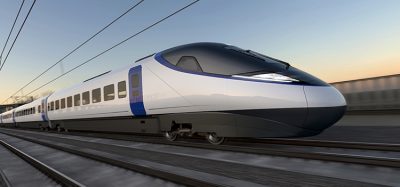Polish State Railways: Achieving a successful first GSM-R link
Posted: 15 February 2011 | | No comments yet
In the past, Poland (with its 23,000km railway network) badly needed a good operational radio communication system. The first simple analogue system started in 1972 connecting the harbours of Gdynia and Gdansk with Silesia. The radio-telephone network has provided good communication between dispatchers and running trains along the whole route of approximately 800km. The loco-drivers, beside the connection with the dispatchers, were able to communicate among themselves. On the frame of this system (which was called colloquially ‘train line radio’) various mutations were created, e.g. marshalling yards or emergency/rescue networks. As it was mentioned, the first PKP analogue system using simplex transmission worked properly and is still operating in a 150 MHz band.
In the past, Poland (with its 23,000km railway network) badly needed a good operational radio communication system. The first simple analogue system started in 1972 connecting the harbours of Gdynia and Gdansk with Silesia. The radio-telephone network has provided good communication between dispatchers and running trains along the whole route of approximately 800km. The loco-drivers, beside the connection with the dispatchers, were able to communicate among themselves. On the frame of this system (which was called colloquially ‘train line radio’) various mutations were created, e.g. marshalling yards or emergency/rescue networks. As it was mentioned, the first PKP analogue system using simplex transmission worked properly and is still operating in a 150 MHz band.
In the past, Poland (with its 23,000km railway network) badly needed a good operational radio communication system. The first simple analogue system started in 1972 connecting the harbours of Gdynia and Gdansk with Silesia. The radio-telephone network has provided good communication between dispatchers and running trains along the whole route of approximately 800km. The loco-drivers, beside the connection with the dispatchers, were able to communicate among themselves. On the frame of this system (which was called colloquially ‘train line radio’) various mutations were created, e.g. marshalling yards or emergency/rescue networks. As it was mentioned, the first PKP analogue system using simplex transmission worked properly and is still operating in a 150 MHz band.
The first small step toward radio network modernisation was performed between 1992 and 1994. Namely, along a suburban railway line near Warsaw of a total length of 35km, the radio-telephone system called ‘Zugfunk 2000’ made by Kapsch A.G Austria was implemented. The network is working in a 450 MHz band and can perform digital and analogue transmissions.
First step toward implementation of GSM-R/ETCS
As it is well known, Polish State Railways signed an AGC agreement in 1986. According to this document, four main European routes run through our country. One – E 30 runs from Germany (Dresden)–Goerliz/Zgorzelec– Legnica–Kraków–Medyka–Kijew–Moscow. In May 2010, PKP Polish Railway Lines SA signed a contract for the design and execution of works under the project ‘Modernisation of the railway line E 30’ Stage II – ‘Pilot implementation of ERTMS in Poland – section, Legnica– Węgliniec–Bielawa Dln.’ The contractor of this project is the consortium of Bombardier Transportation – Sweden A.B. and Bombardier Transportation (ZWUS) – Polish company Ltd. In June 2010, PKP-PLK.SA announced the tendering for construction of GSM-R. The contract involves the design, construction, equipment, commissioning, configuring and testing the functional infrastructure of GSM-R. The result of the tendering is not yet known, however it seems the main challengers are consortium Kapsch AG and consortium Nokia Siemens Networks with Alcatel-Lucent Polska.
The interoperability and implementation of GSM-R
The implementation of GSM-R at different national railway boarders enables cross-border interoperability railway movements. The European Commission mandated the European Railway Agency to implement GSM-R on so-called TEN (Trans European Network) routes.
At the moment this vision is not optimistic because not all the European Boards are able to implement a digital GSM-R system, however the majority did so4. On the other hand in the remaining countries (as someone may suspect) so far existing analogue radio systems fulfil requirements of railway communication3. The same situation existed up to now in Polish State Railways – PKP. As was mentioned at the start of this article, the analogue FM system implemented in 1972 is still working properly. The system 3006-150 has the possibility of selective acoustic calling both for moving trains and dispatchers.
Moreover, a combination of three acoustic frequencies was designed which gives an alarm signal. This signal (modulated a HF carrier) can stop all the trains in a propagation/coverage range. Acoustic output of loco-radio-telephone is connected (via special inter-face) with a locomotive braking system.
Reception of this alarm signal once prevented a railway catastrophe. This technical solution invented at the Radio Plant ‘Radmor’ was patented. All types of PKP locomotives are equipped with very modern antenna of type ‘low Silhouette’.
Serious talks within the PKP Railway Board started in 2004, because there was a chance to secure financial aid from the EU (e.g. from ERDF or ISPA). Having in mind a technical side of those talks carried in the Railway Board, the problem of migration should be underlined2. PKP has a vast amount of various types of radio-telephones (about 30,000) in operation3. These large amounts of radio equipment (stationary, mobile, portable) are working in different networks – some of them in the networks crucial for security of running trains. Migration means, roughly speaking, changing a system from analogue to digital, resulting in complete replacement of equipment – stationary and mobiles. Moreover, changing frequencies (from 150 MHz band to 920 MHz band and 875 MHz band) results in changing stationary infrastructure, e.g. antennas and feeders. Migration is a very long process. The first theoretical attempt, made in the Railway Institute (CNTK) in 1990, calculated a period of full migration of five years. At that time, the migration aim was not only conversion from analogue to the digital system, but also a change of governing mode for train movements. There were some trials to implement a two band system working both in 150 MHz band and 450 MHz band. In the case of 450 MHz band, the mentioned system was working in a duplex mode using three fixed transmit frequencies for base stations and one mobile transmit frequency – being designated a frequency quadruple. The system mentioned above was complicated and very expensive and was therefore not implemented. The only one system fulfilling UIC nr 751- 3 Requirements, was implemented near Warsaw, that is ‘Kapsch Zugfunk 2000’ and is working up to this day.
The delay in taking a decision turned out to be fortunate, because starting in 1992 was the ‘GSM- Standard Phase 1’ and ‘Phase 2’ including EIRENE which was finished in 1994. In the meantime, the UIC Chart 751-4 was edited. It was clear for the PKP Directory that there is only one way for the modernisation of a rail radio network – implementation of GSM-R3. When Poland became an EU member in 2004, there was no doubt of receiving financial help. The proper way was chosen; start implementing GSM-R on a segment of international line, like E 30.
The first GSM-R link in preparation to install radio infrastructure
Some basic technical data describing the whole pilot link are fixed and can be presented. First let us look at the line diagram in Figure 1 opposite. On the entire line of 84km in length, 16ten BTS stations will be erected. The average distance between neighbouring BTS equals 5km having in mind folding terrain, two embankments and woods. The radio signal received by the mobile unit is subjected to variations.
There is no problem with long-term fading (they do not occur at all), only a short duration fading may cause a minute of disturbance. Precise measurements of field strength distribution have been completed which have proved a sufficient UHF signal on the receiver input (installed in a vehicle). For example, a signal level in the vicinity of a pilot line varies in range < -35dBm – 60dBm > which gives signal value (in a 50 Ohm input) < 3.96mV, 224uV > what is very, very good. Of course, during measurements, the acoustic output of a receiver was controlled to assure signal-to-noise ratio of 20 dB. Taking into account the growth of woods, the reserve of 10 dBm was taken. The BTS stations are connected via fibre optic cables to a BSC station and next to MSC. The transmission speed and a bandwidth of fibre is adjusted to the planned traffic. BTS stations are temperature-sensitive equipment. Usually the BTS are unmanned. Therefore, some parameters are required to be monitored from the central maintenance location, e.g. high temperature, battery voltage low, fire alarm, charger failed and AC Machine failed.
To keep the ambient temperature below a certain level, two window-type air conditioning machines are to be installed. They run alternatively for 12 hours each.
All technical requirements for BTS stations, for mobile units as well as field strength and a safety signal level are described in EIRENE FRS 7 and SRS 15.0 will have to be fulfilled by a contractor.
Conclusions
The radio system GSM-R is based on the GSM standard technology. However, it offers several additional features important for railway applications like functional addressing, presentation of functional numbers, location dependant addressing and ASCI functions1. After the testing period is complete, it will be possible to evaluate its advantages of operating on the Polish railway link.
References
1. Safrati R.: GSM-R, A new digital radio standard in the transport domain, Global Railway Review, 2003, Issue 2
2. Richard J.: The clue to an ETCS – only access, Global Railway Review, 2008, Issue 4
3. Przelaskowski K.: EIRENE – Pan-European cellular radio-telephone network for railway and its passengers. Przegląd Telekomunikacyjny + Wiadomości Telekomunikacyjne, nr 3, 1997 www.ptiwtel.neostrada.pl
4. Przelaskowski K.: Paneuropean network GSM-R improves iernational railway traffic, Przegląd
About the Author
In 1963, Kris Przelaskowski graduated from the Technical University of Gdansk in electronics and telecommunication. In 1965 he conducted practical studies with Standard Radio and Telefon A.B. in Stockholm, Sweden, with a field of study for crystal filters and multiple carrier telephony. Between 1965 and 1968, he worked at the Technical University of Gdansk, then in the Radio Plant ‘Radmor’ in Gdynia as Senior Constructor. From 1972 until retirement, he worked at the Railway Scientific Institute – CNTK in Warsaw, and finished his career in the Laboratory CDOKP. Kris Przelaskowski is specialised in radio telephone systems in tunnels.







